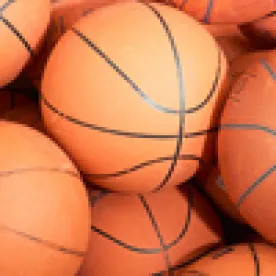This is the first installment of a series regarding legal issues affecting college athletics that this blog will run during this year’s NCAA basketball tournament.
Two horrible March Madness brackets ago, we analyzed the myriad of legal and operational challenges that could change the face of intercollegiate athletics. The smoke has begun to clear on one critical issue – student-athletes have not been granted standing to assert rights as employees. Interestingly, the recent decisions involving the National Labor Relations Act (NLRA) and the Fair Labor Standards Act (FLSA) on this issue have come at a time of expanding rights for student-athletes.
The “Power 5” athletic conferences recently approved changes allowing for expanded financial aid to account for true cost of attendance, increased independence of medical personnel treating student-athletes, access to multi-year grants-in-aid, and heightened attention to academic support programs. While more work is to be done, even critics of college athletics note a rising tide in student-athlete rights.
Given the attention to revenues generated by the powerhouse Division I athletic programs, it is ironic that two key decisions on the student-athlete labor question involved Northwestern University and the University of Pennsylvania. Last fall, the NLRB declined to assert jurisdiction over scholarship athletes on Northwestern University’s football team. In reaching its decision (in which the NLRB elected to punt on the issue of whether student-athletes were statutory employees), the NLRB noted the acceleration of rights granted to student-athletes such as multi-year athletic scholarships at FBS institutions, giving an implicit nod to changes spearheaded by the Power 5 conferences.
More recently, a federal court in Indiana found that the University of Pennsylvania women’s track team were not “employees” for purposes of the FLSA. In a ruling issued from the NCAA’s backyard, the court noted the relevance of amateurism rules in conducting fair competition and the benefits generated by the athletic experience in the educational setting.
Even with these rulings, the players competing in the round of 64 (or 68 if you’re not old-school on that issue) enjoy more protections than their counterparts two years ago. Consider that many of this year’s tournament participants will have:
-
Access to athletic grant-in-aids which cover the true cost of attendance as determined by their institutions (albeit without $5,000 stipends, as a prior ruling in the O’Bannon litigation permitting such payments was overruled by the 9th Circuit on appeal);
-
The assurance that medical staff who evaluate student-athletes hold final authority on medical decisions, thus avoiding potential conflicts of interests in reporting relationships with athletics personnel;
-
Protection from an athletic scholarship not being renewed for athletic reasons;
-
An evaluation window to assess their standing to play professional basketball by being able to enter the NBA Draft multiple times (subject to withdrawal at a specified date), participation in the NBA Draft combine and even the ability to try out with one team, each without forfeiture of amateurism status; and
-
Support for family members to attend the Men’s and Women’s Final Four.
Open issues remain, including potential changes to time demands for athletic activities. At this point, it is increasingly viewed that the largest legal hurdle for the newly evolved amateurism structure is on antitrust grounds. On cue, last month brought a new claim challenging the NCAA’s transfer rules.
Even so, college presidents and athletic directors have reason to be pleased with the current resolution of employment and labor-based claims relating to student-athletes. Given the expansion and modification of student-athlete rights, much of which is occurring at the conference level, it is critical to make sure internal policies and practices are consistent with these new standards.




 />i
/>i

